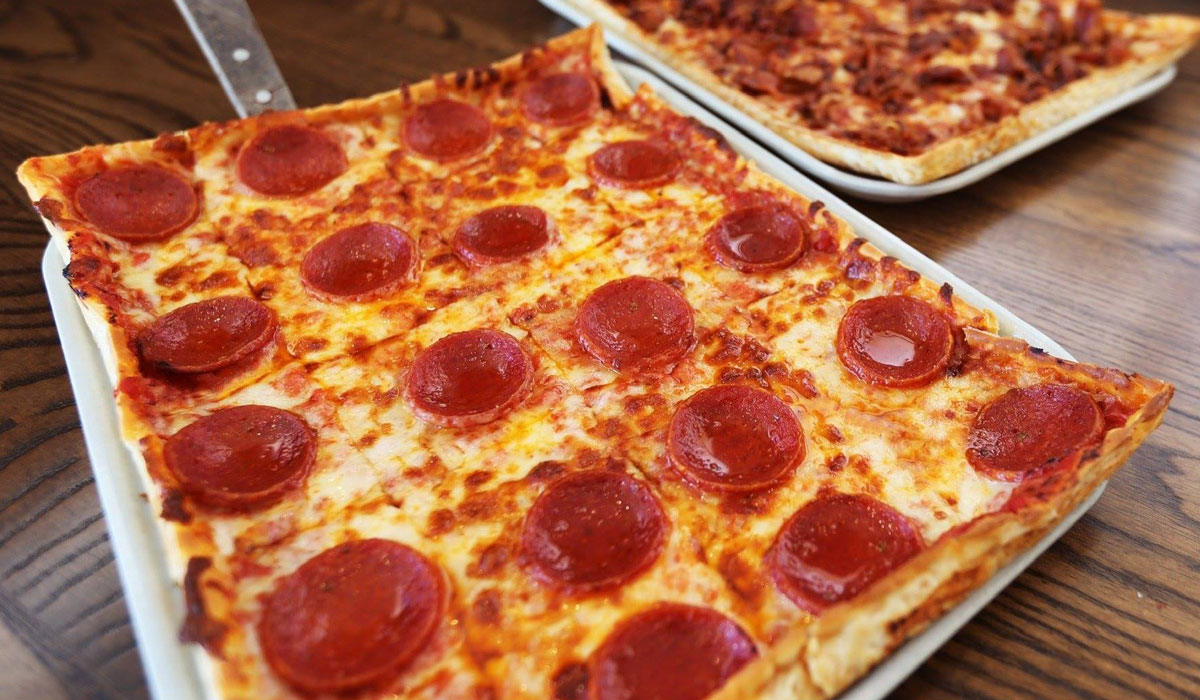Maryland-based Ledo Pizza has ramped up its plans to grow through former restaurant spaces.
The pizza chain is bullish on an expansion strategy that converts closed restaurants into locations for the brand. By the end of the year, the brand plans to exit with four new conversions.
Ledo Pizza had already started implementing its conversion hopes prior to the pandemic, with COO Jamie Beall estimating about a quarter of Ledo Pizzas being conversions. At the time, Beall could easily tell why those restaurants didn’t survive. Many of the floor plans and kitchens lacked proper design.
But since limited dine-in capacities put more well-established operators out of business, these telltale signs have been less common. And with a brutal winter looming, Beall sees fresh opportunity for the chain.
“While it’s extremely unfortunate to see these people fail for the pandemic, it does open up some opportunities for other people,” Beall says. “Before I could save money on 25, maybe 30 percent of the former restaurants we walked into. Now I’m looking at it going, ‘Wow, there’s a lot of seasoned people in about 50 percent of these conversions.’ It makes sense to do it where we can save substantial money.”
As of now, about 70 percent of Ledo Pizza’s build-outs are conversions. Considering the financial incentives, it’s easy to understand the lure. A typical Ledo Pizza costs about $450,000 to get up and running. But a converted Ledo Pizza can save a franchisee over 33 percent, allowing them to get a location open with only $250,000 to $300,000.
Buying a previously used space means the brand has to convert each storefront on a case-by-case basis. Despite each location’s unique set of circumstances, Ledo Pizza has followed an acronym called “T.O.M.P.”—technology, operations, marketing and procurement—to guide each conversion.
These focus points don’t necessarily have a set process each location must follow. Instead, these pillars identify how operators can approach their conversions. Beall notes that one part of the strategy, technology, has especially made the conversion process easier for the brand. Pre-COVID, Ledo Pizza’s online ordering sales averaged about 3 percent of overall sales. Now, almost 40 percent rely on online sales.
“[Technology] has made doing a lot of these restaurant conversions easier because the customer is really gravitating to the online sales and the contactless pick up. The carryout can be a little bit more flexible because we can place those stations anywhere because the customer’s serving themselves,” Beall says.
The ability of technology to carry food off-premises gives Ledo Pizza the chance to be more flexible with real estate. Whereas a 2,400-square-foot space was the ideal space when dine-in was a guarantee, now the brand can convert spaces at 2,000 square feet.
But this strategy isn’t just a short-term cash grab. In Ledo’s case, cheaper overheads and more willing landlords can get locations running in previously inaccessible markets, like Washington D.C.
“Washington D.C. is an extremely high-rent district. Our business format really didn’t make sense to pay the rents,” Beall says. “Now there’s some opportunities where we could do some long term deals at significantly less rents. “We are going into some places that we wouldn’t typically do, and we’re kind of bearing down for a year or two.”
On the franchisee end, Ledo Pizza’s veteran franchisees are most willing to jump on the conversion strategy, while less-experienced franchisees have been more hesitant.
“Those that understand the restaurant business, especially multi-unit operators, they really get it. So it’s been well received by them,” Beall says. “[First-time restaurateurs] just don’t know the space. Their main concern is that they hear restaurants shutting down all the time on the news.”
For those less bullish on conversions, Beall added that educating operators and getting them more comfortable to navigate the landscape is key.
Inherently, converting a restaurant kitchen may come with problems that need fixing. Sometimes, the brand has had to update kitchen devices merely a month after use.
But for the COO, those bumps are going to happen regardless of whether the space is converted or not. The brand is optimistic about its strategy, and will look to continue its growth-through-conversion plan for the next year to 18 months. Post-pandemic, the brand aims to be less aggressive in converting old restaurants.
For chains that have the flexibility in their floor plans, Beall says conversions are a great strategy for growth.
“We’re all getting beat up in our own certain ways. So when you can find a little light at the end of the tunnel and something to hang your hat on, now is the time to do it,” Beall says.








